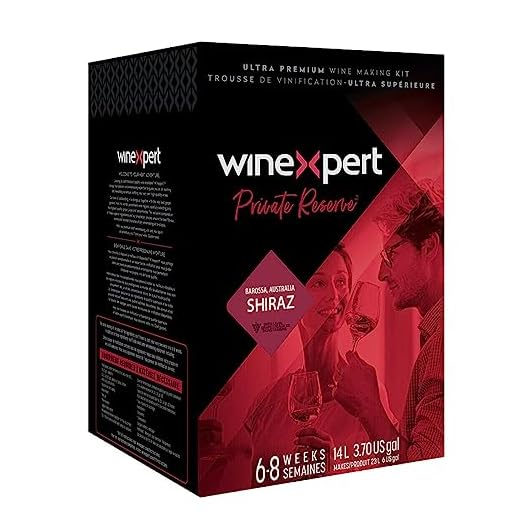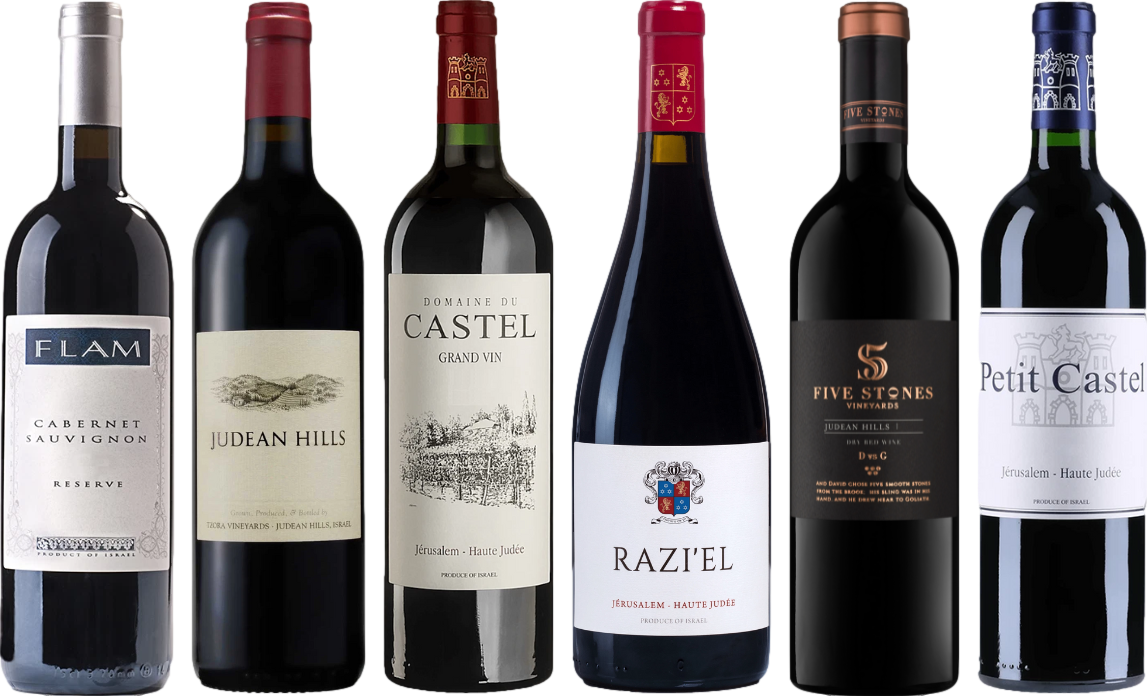



If you’re seeking an outstanding choice, I highly recommend a blend featuring Zinfandel and Syrah. This combination offers a rich tapestry of flavors, with the Zinfandel providing ripe berry notes and the Syrah adding depth with its peppery and smoky undertones. Look for producers like Ridge Vineyards or Cline Cellars, who consistently deliver remarkable quality at accessible prices.
Another excellent option is a mix of Cabernet Sauvignon and Merlot. This duo creates a harmonious profile, where the boldness of Cabernet balances the softness of Merlot. Seek out bottles from Napa Valley, particularly those crafted by wineries such as Stag’s Leap Wine Cellars or Chateau Montelena, to experience the perfect marriage of these varietals.
For those interested in exploring something unique, consider a combination of Grenache and Mourvèdre. This partnership is often found in blends from the Southern Rhône region, bringing forward bright red fruit flavors paired with herbal and earthy nuances. A bottle from a reputable producer like Château de Beaucastel will showcase the true potential of this blend.
Whether you’re enjoying a casual meal or a special occasion, these suggestions will elevate your experience. Pair them thoughtfully with dishes like grilled meats or hearty pasta to truly appreciate their character.
Key Characteristics of Quality Red Blend Wines
A well-crafted combination will exhibit balance, showcasing the strengths of each component grape variety. Key attributes to consider include:
| Characteristic | Description |
|---|---|
| Complexity | Look for multi-layered profiles that develop over time, offering diverse aromas and flavors like dark fruits, spices, and earthy notes. |
| Tannin Structure | Evaluate the tannins; they should be smooth and integrated, providing a pleasant mouthfeel without overpowering the palate. |
| Acidity | A refreshing level of acidity is essential, enhancing food pairings and contributing to the wine’s longevity. |
| Fruit Expression | Quality examples highlight ripe fruits, such as blackberries or plums, balanced with secondary flavors from oak aging, like vanilla or toast. |
| Finish | A lingering finish indicates quality; flavors should persist and evolve, leaving a memorable impression. |
Pay attention to the winemaker’s philosophy and the region’s terroir, as these factors significantly influence the final product. Exploring lesser-known varietals within the blend can also yield delightful surprises, enhancing the tasting experience.
Popular Grape Varieties in Red Blends
Cabernet Sauvignon stands out as a foundational variety, known for its full body and rich flavors of dark fruit, tobacco, and cedar. It’s often paired with Merlot, which softens the profile with its plum and cherry notes, creating a harmonious balance.
Syrah, with its robust and spicy character, frequently complements Grenache, introducing layers of berry and herbal complexity. This combination can yield an expressive profile that is both bold and approachable.
Other Notable Varietals
Adding Pinot Noir to a mixture can lighten the overall structure, introducing bright acidity and red fruit flavors. This varietal often enhances the blend with elegance and finesse.
Malbec, known for its ripe fruit and velvety mouthfeel, can bring depth to the composition, enriching the blend with dark berry and cocoa notes. It’s a great choice for those seeking a more intense experience.
Conclusion
Each of these grape varieties contributes distinct traits, allowing for diverse and interesting combinations. Experimenting with different proportions will lead to discovering unique flavor profiles that can elevate any selection.
How to Taste and Evaluate Red Blend Wines
Start with a visual assessment by checking the color and clarity. Swirl the glass to observe the legs; thicker legs can indicate higher alcohol or sugar content.
Next, take a deep inhale to identify the aromatic profile. Look for layers of fruit, spice, and earthy notes. Fresh berries, oak, and herbal nuances often emerge, providing insight into the varietals used.
For the palate, take a small sip and let it coat your mouth. Pay attention to the balance of acidity, tannins, and sweetness. A well-structured option will have a harmonious interplay among these elements, leading to a smooth finish.
Evaluate the complexity. Quality options often reveal different flavors as they open up, shifting between initial impressions and lingering notes. A lengthy finish is also a mark of excellence.
Consider the pairing potential. Reflect on how well this selection complements various dishes. Versatility can enhance the overall experience, making it enjoyable on its own or alongside food.
Lastly, keep a tasting journal. Documenting your impressions helps track preferences and discover new favorites over time. This practice not only sharpens your palate but enriches your exploration of flavors.
Food Pairing Tips for Red Blend Wines
For a delightful dining experience, consider pairing your choice with hearty dishes. The rich flavors of these wines complement various cuisines beautifully.
- Grilled Meats: Opt for steaks or lamb chops. The char from grilling enhances the wine’s fruit notes.
- Pasta with Tomato Sauce: The acidity of the sauce balances the wine’s tannins, creating a harmonious experience.
- Roasted Vegetables: Root vegetables like carrots and beets bring out the earthiness, making for an excellent match.
- Cheese Platter: A selection of aged cheeses, particularly Gouda or Cheddar, pairs wonderfully with the wine’s complexity.
- Spicy Dishes: Barbecue or spicy Asian cuisine can enhance the fruity qualities, offering a delightful contrast.
When planning a meal, remember to consider the wine’s body. A full-bodied option matches well with robust flavors, while a lighter choice complements more delicate dishes. For those with pets, don’t forget to ensure your furry friends are well-fed too; check out this best dog food for doberman to gain weight for nutritious options.
Experimenting with different pairings can lead to surprising and enjoyable results. Keep an open mind and enjoy the journey of discovering what works best for your palate!
Regions Known for Exceptional Red Blends
California’s Napa Valley stands out for its premium offerings. The ideal climate and diverse terroirs yield remarkable combinations, particularly those featuring Cabernet Sauvignon and Merlot. Wineries like Opus One and The Prisoner exemplify this region’s artistry.
In France, the Rhône Valley is celebrated for its rich heritage in crafting exceptional mixed varietals. The Châteauneuf-du-Pape appellation is renowned for its GSM blends–Grenache, Syrah, and Mourvèdre–that showcase the region’s complexity and depth.
South America’s Rising Stars
Chile has emerged as a powerhouse with its bold and fruit-forward mixes. Regions like Colchagua Valley produce stunning blends, often incorporating Carmenere, Cabernet Sauvignon, and Syrah. Look for wines from producers such as Santa Rita and Montes, which offer great quality at accessible prices.
Australia’s Unique Offerings
In Australia, the Barossa Valley shines with its robust and spicy blends. Shiraz often takes center stage, complemented by Grenache or Mataro in many acclaimed bottles. Seek out offerings from Penfolds or Torbreck for a taste of this distinctive style.
Exploring these regions will open your palate to a world of exciting combinations that reflect their unique climates and traditions. Each sip tells a story of the land and the winemakers’ dedication to their craft.
Understanding Wine Labels for Red Blends
Focus on the varietals listed on the label; they provide insight into the flavor profile and structure. A label might indicate percentages of grapes used, which can reveal the wine’s complexity. For instance, a blend featuring a significant portion of Cabernet Sauvignon may exhibit bold tannins and deep fruit flavors, while a predominant Merlot component could introduce softness and roundness.
Pay attention to the region of origin. Certain areas are renowned for specific grape combinations. For example, a California label often suggests ripe fruit characteristics, while a blend from a cooler climate might highlight acidity and elegance. The vintage year is also vital; it reflects the growing conditions that year, impacting the overall character of the bottle.
Look for terms like “reserve” or “superior” on the label, which may indicate a higher quality selection, although the definition can vary by producer. Certifications like organic or biodynamic may also be present, appealing to those who prioritize sustainable practices.
Finally, consider the producer’s reputation. Established wineries often have a track record of quality and consistency, so researching or asking about the winery can provide additional assurance of a satisfying selection.
Budget-Friendly Options for Red Blend Wines
For those seeking quality without breaking the bank, several affordable selections stand out. Brands like Apothic and Menage a Trois consistently deliver excellent flavors at a lower price point. Each bottle typically retails for around $10 to $15, providing an accessible introduction to this style.
Top Picks Under $20
- 14 Hands Hot to Trot: A blend of Merlot, Syrah, and Cabernet Sauvignon, this wine offers ripe fruit flavors and a smooth finish.
- Josh Cellars Red Blend: Known for its rich berry notes and hints of vanilla, this option complements various dishes.
- Robert Mondavi Private Selection: This blend showcases dark fruit and spice, making it a versatile choice for casual gatherings.
Value Recommendations
- Columbia Crest Grand Estates: A superb mix of Cabernet Sauvignon and Merlot, providing depth and character for under $15.
- Blackstone Winemaker’s Select: With its approachable style and balanced profile, it’s perfect for both newcomers and seasoned enthusiasts.
- Chateau Ste. Michelle Indian Wells: This option highlights ripe fruit flavors and a touch of oak for a well-rounded experience.
Exploring local options can also lead to hidden gems. Many regions produce exceptional blends at competitive prices. Checking out smaller wineries or local producers can yield delightful surprises that satisfy both palate and wallet.
FAQ:
What types of grapes are commonly used in red blend wines?
Red blend wines can be made from a variety of grape types, depending on the region and the winemaker’s preference. Common grape varieties include Cabernet Sauvignon, Merlot, Syrah, Zinfandel, and Malbec. Often, these grapes are blended to create a balance of flavors, aromas, and textures. For example, a blend might use Cabernet Sauvignon for structure and tannins, while Merlot adds softness and fruitiness. The combinations can vary widely, allowing for diverse flavor profiles in the final product.
How do I choose a good red blend wine for a dinner party?
Choosing a good red blend wine for a dinner party involves considering the menu, the preferences of your guests, and the wine’s characteristics. Start by thinking about the main dish; for example, a hearty meat dish pairs well with a full-bodied blend, while lighter fare may suit a softer wine. Look for wines with a good balance of acidity and tannins, as these will complement a variety of foods. Additionally, seeking recommendations from a knowledgeable staff at a wine shop or reading reviews online can guide you toward quality options. Don’t hesitate to explore different regions, as wines from places like Bordeaux or California can offer distinct profiles. Lastly, consider serving a couple of different blends to cater to varying tastes.








